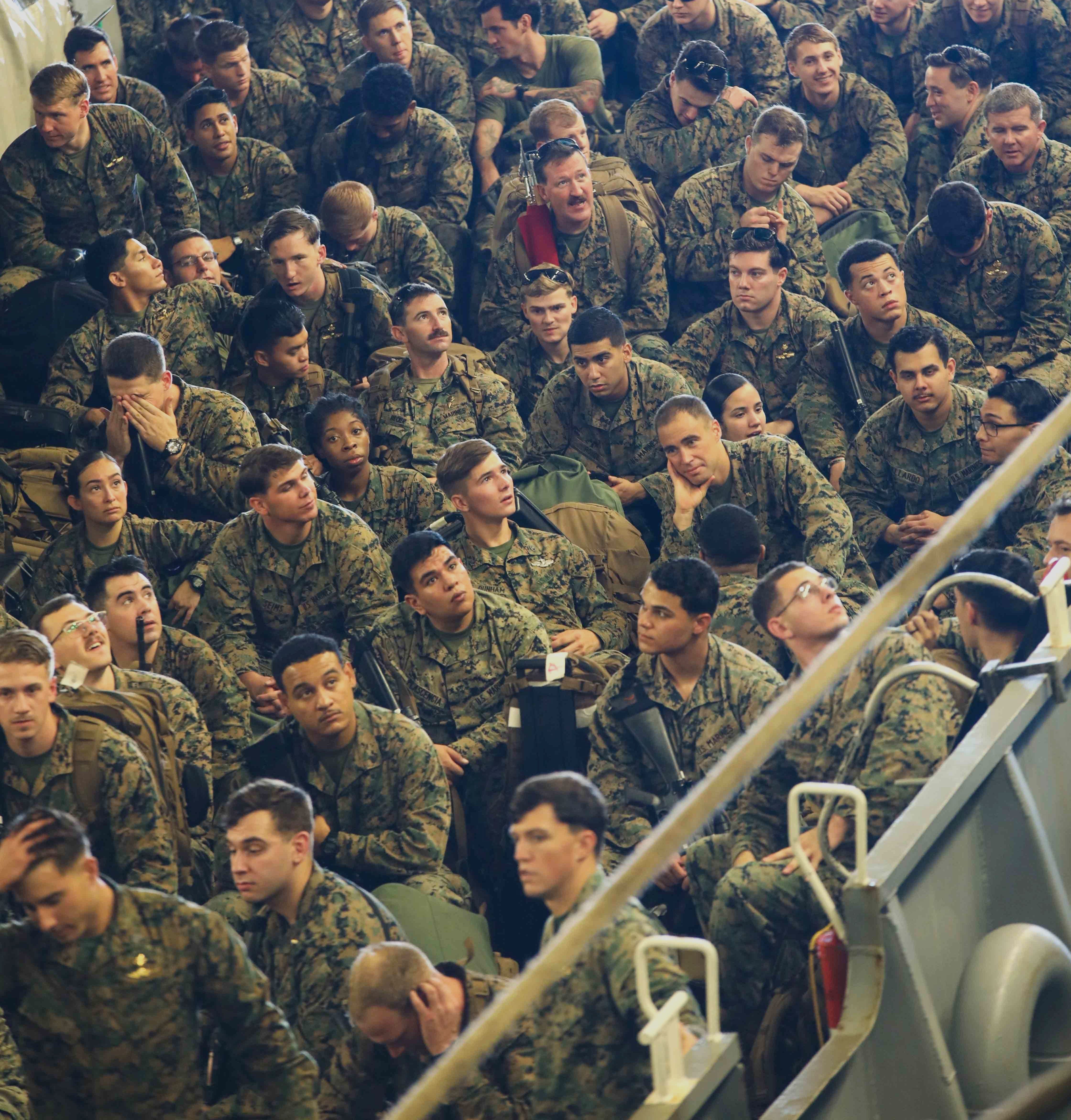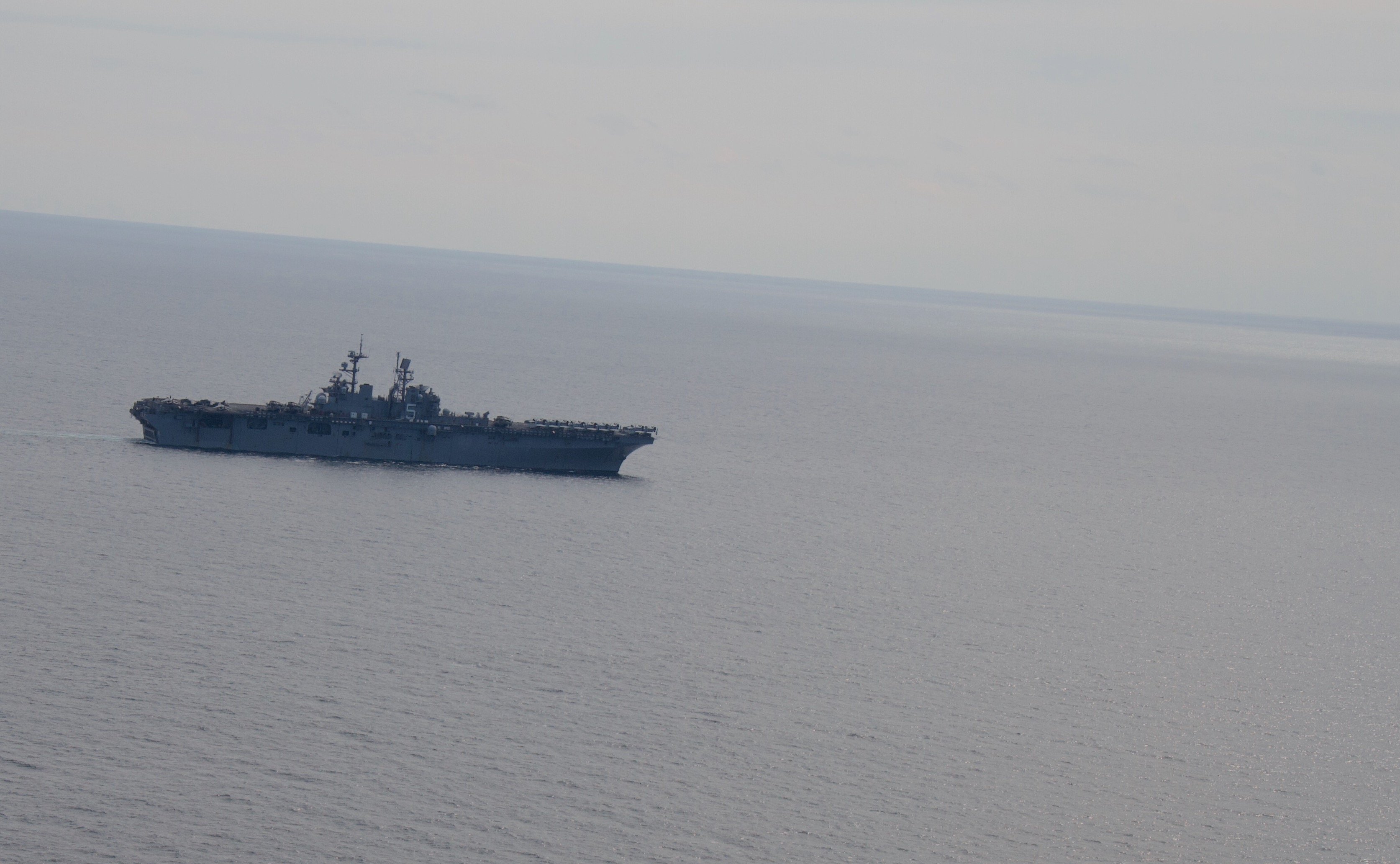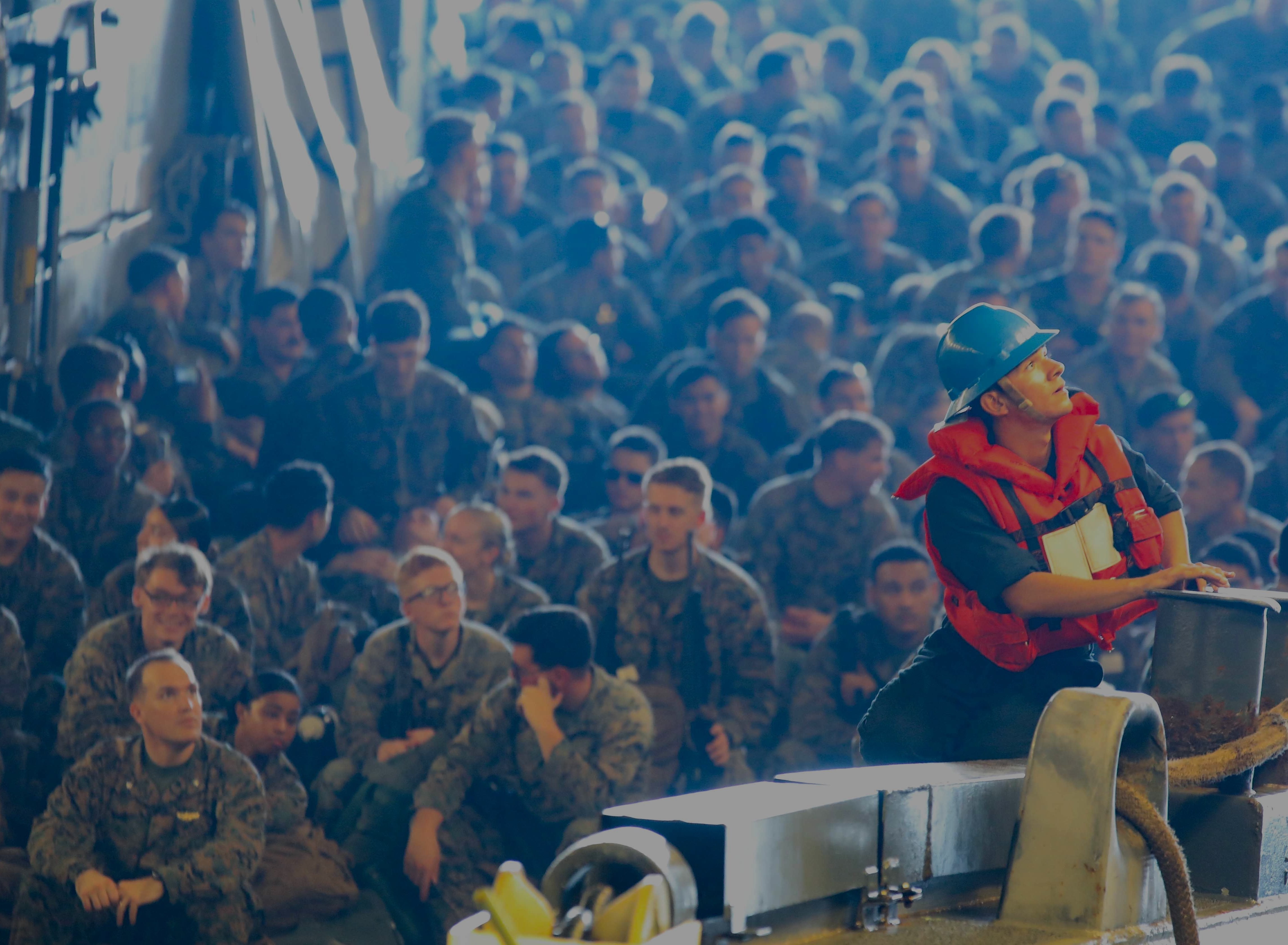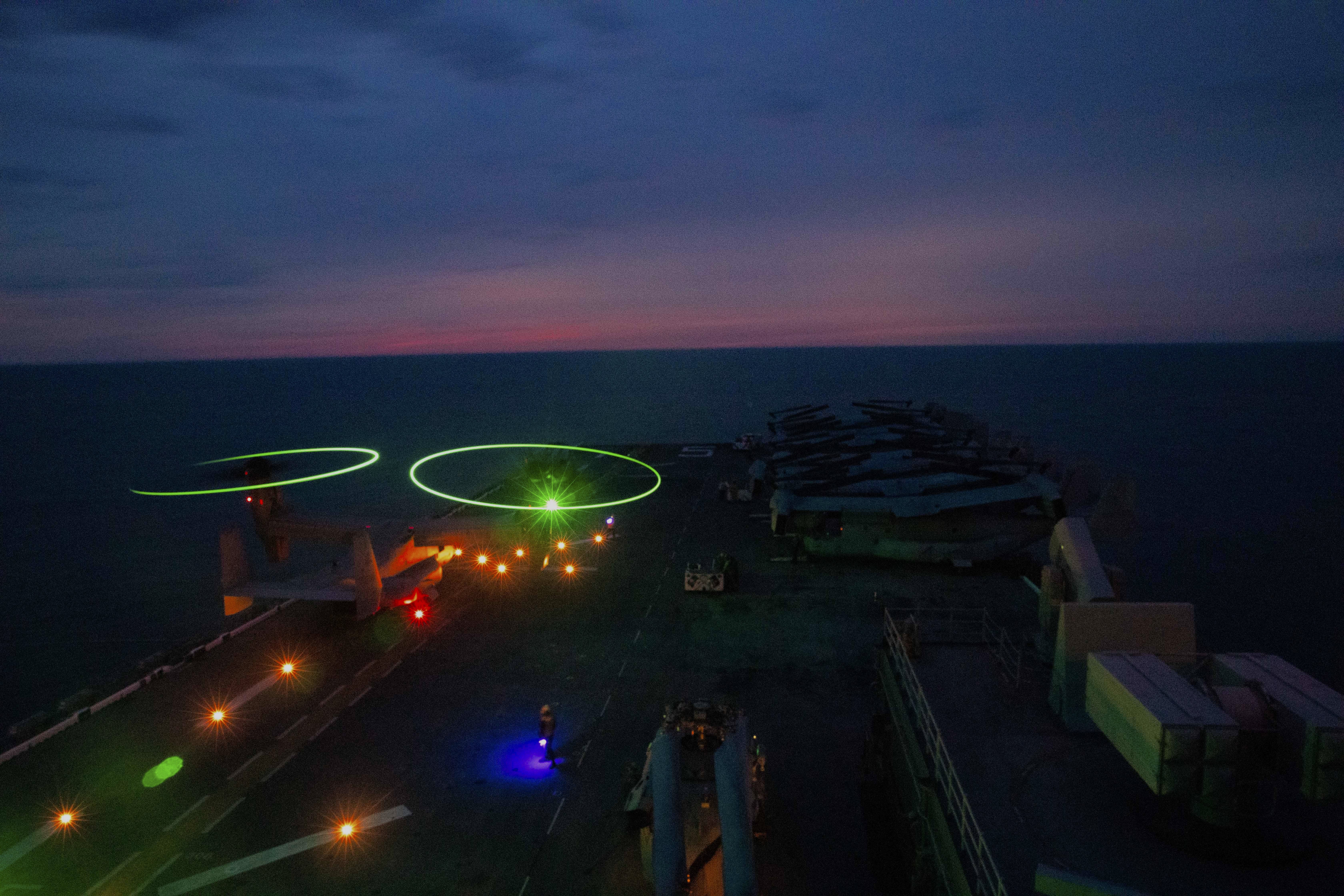
ABOARD AMPHIBIOUS ASSAULT SHIP USS BATAAN – The ongoing graduation exercise for the Bataan Amphibious Ready Group (ARG) and 26th Marine Expeditionary Unit (MEU) will not only get the 4,500 sailors and Marines ready to deploy later this year but also has started a conversation at the deck plate level about how the services will fight together in the future.
ARG/MEU’s Composite Training Unit Exercise (COMPTUEX) is the first since the Marine Corps unveiled Commandant Gen. David Berger’s command guidance for the service that outlines how the service will operate at the high-end, with a focus on integration between the two naval services.
In line with the larger push from the Pentagon to place an emphasis on conflict between major powers, the sailors and Marines aboard the three-ship ARG need to be ready to operate in more places at short notice, Capt. Lance Lesher, the commodore of Amphibious Squadron 8, told USNI News in an interview last week.
“We’ve been anchored kind of to the Arabian Gulf for quite some time,” he said.
“Now, and with great power competition, the emphasis is that we are not limited to one specific area: the Baltic, the Med, the Arabian Gulf, the Indian Ocean. What I’m getting from my bosses consistently is, we are worldwide deployable and we need to do all those missions.”
For Marines aboard Bataan, that translates to working more closely with the Navy at sea, 26th MEU Commanding Officer Col. Trevor Hall told USNI News in an interview aboard Bataan last week.

“As a naval force, we have a share in this. Naval warfare is brutal, as we have seen in the past, which we may not be as accustomed to it in recent times,” Hall said.
The COMPTUEX series stresses a version of naval integration that puts Marines to work underway rather than the green force just hitching a ride to shore.
As part of the COMPTUEX, Marine assets were part of combined air defense and live-fire exercises to complement the systems aboard Bataan and the two other ships in the ARG, USS New York (LPD-21) and USS Oak Hill (LSD-51). Neither the Navy nor the Marines provided details on the scenario of the exercise when asked by USNI News.
Hall didn’t go into how the Marines assisted in the scenarios, but in the past the Pentagon has released imagery of Marines on the decks of amphibs with a variety of systems they would use ashore, such as light armored vehicles and anti-air missile systems. Earlier this year, President Donald Trump highlighted the Marines’ anti-drone Marine Air Defense Integrated System (MADIS) on the deck of USS Kearsarge (LHD-3) that was used to splash an Iranian drone during a Strait of Hormuz transit.
Specifics aside, ARG/MEU leaders said the intent was to instill a cultural change in the Marines and sailors to work more closely together.
“Throughout the years we’ve had some minor changes to accommodate new technologies with regards to equipment and weapons systems,” Hall said.
“But now we’re beginning – with the change to the National Defense Strategy and with Gen. Berger’s guidance – shifting more of our focus towards great power competition. We are at the beginning stages of where I believe that we’re going to start to see a change of the [training] scenarios.”

Several times during the interview, ARG/MEU leadership touched on the Navy and Marine Corps fighting during the World War II campaign at Guadalcanal and the book Neptune’s Inferno when they mentioned cooperating together.
“It’s to expand application of Marine forces in support of the naval campaign; in support of the float commander; in support of composite warfare. How we do that?… A new way of integrating, not just support ashore, but Marines being involved in missions at sea in support of the fleet,” Hall said.
“The point that we try to stress is, if a ship sinks, we’re going to sink with it. It’s in our best interest not to let that happen.”
For example, the 26th MEU Marines are training as firefighters alongside the Navy’s damage control teams.
“Marines, every man a rifleman. Sailors are all firefighters because it’s important to be able to fight. But the connection of being able to fight a fire and save the ship, blue or green, I think is very important,” Bataan commander Capt. Gregory Leland told USNI News.
The emphasis on tougher combat problems are also acting as an accelerant to bring the Navy and Marine Corps closer together, Lesher said.

“It forces more and more integration, and when the Marines know that the ship’s survival is based upon them, there’s more buy-in. You got more skin in the game,” he said. “That’s part of a top-down philosophical desire to move towards the higher end. That means more threat, more cooperation.”
While the conversation around the high-end has been on the minds of leadership, there are other operations they can’t ignore.
“We do have focus against great power competition, but just as we’ve seen throughout history, sometimes there are limited-scale contingencies that we have to be prepared to respond to as well,” Hall said.
For example, the Bataan ARG’s humanitarian and disaster relief training was cut short to respond to the real-life crisis in the Bahamas after Hurricane Dorian made landfall.
“We immediately made up for that lost training by actual real application,” Hall said. “Unfortunately, it consumed a little bit more time than was programmed.”





